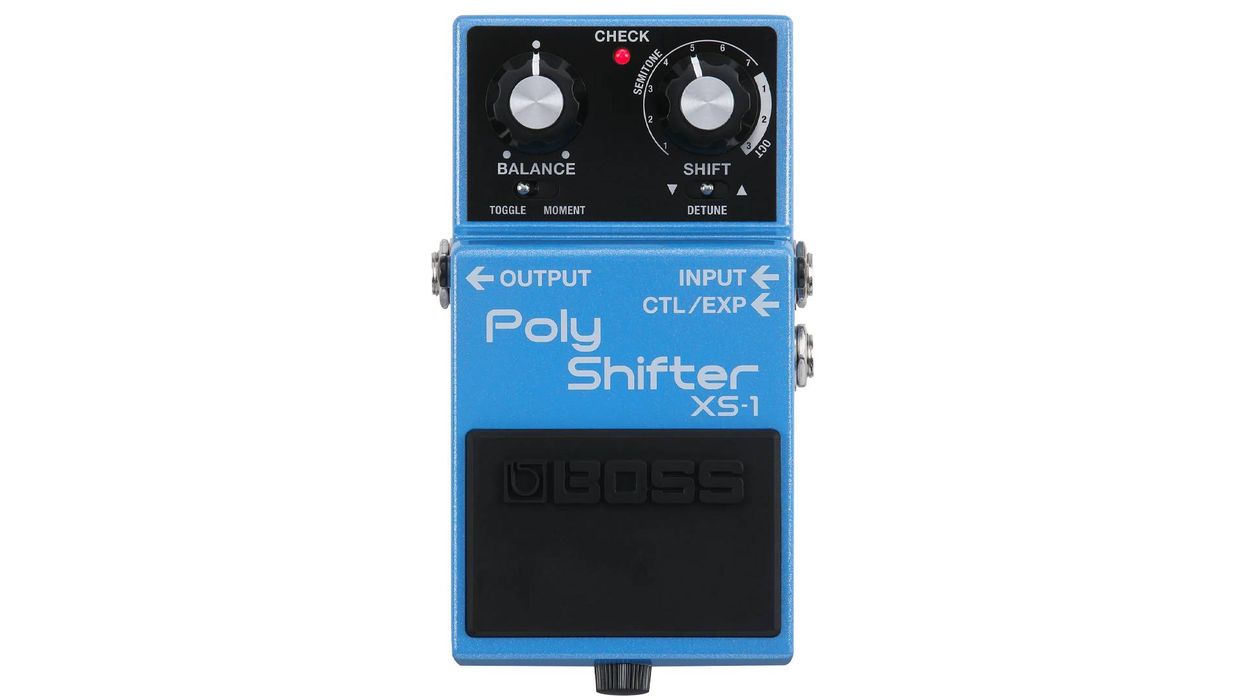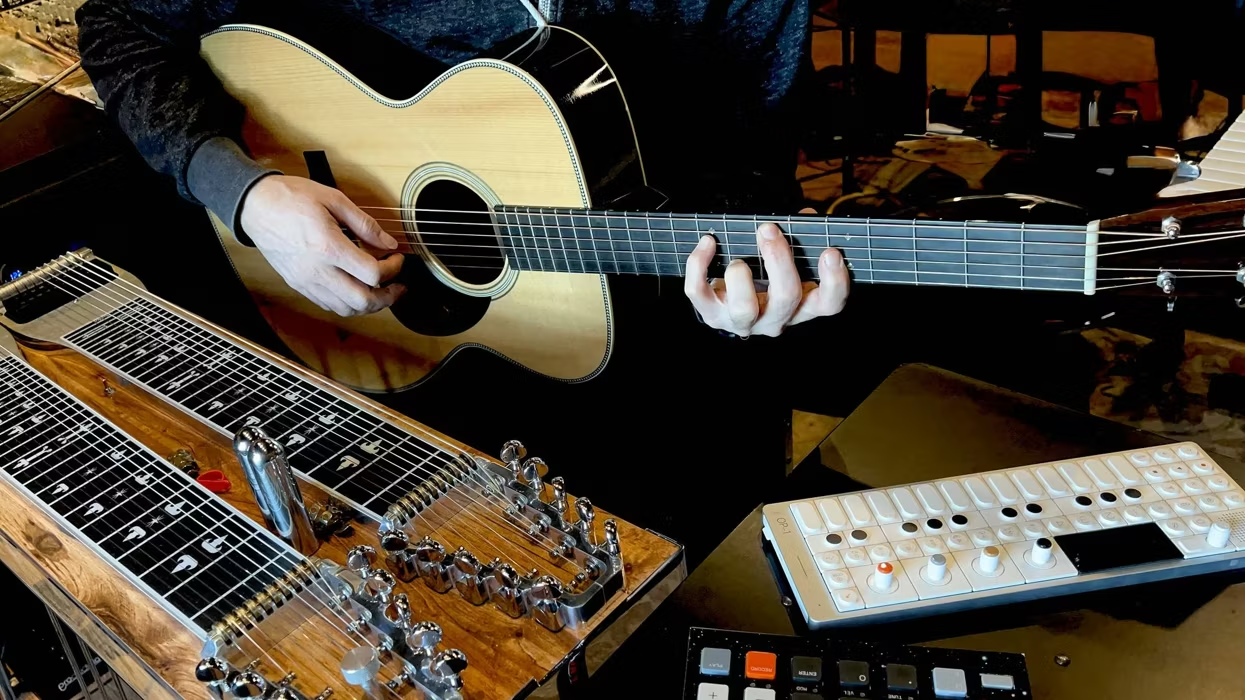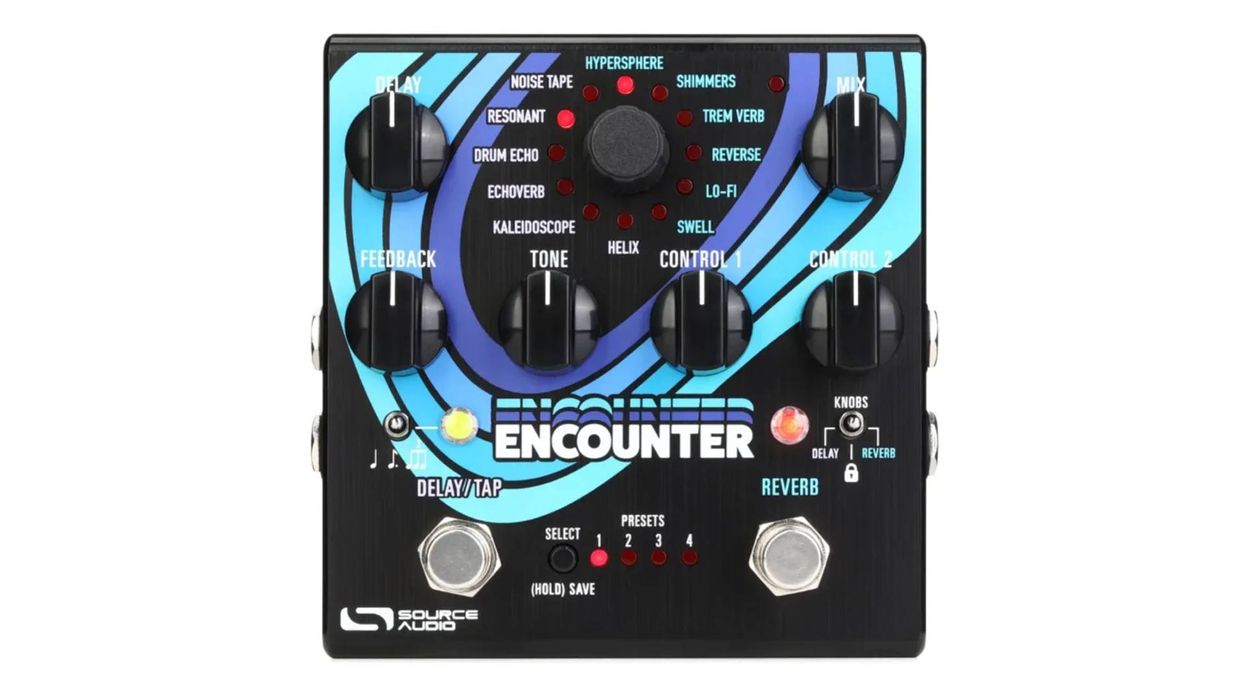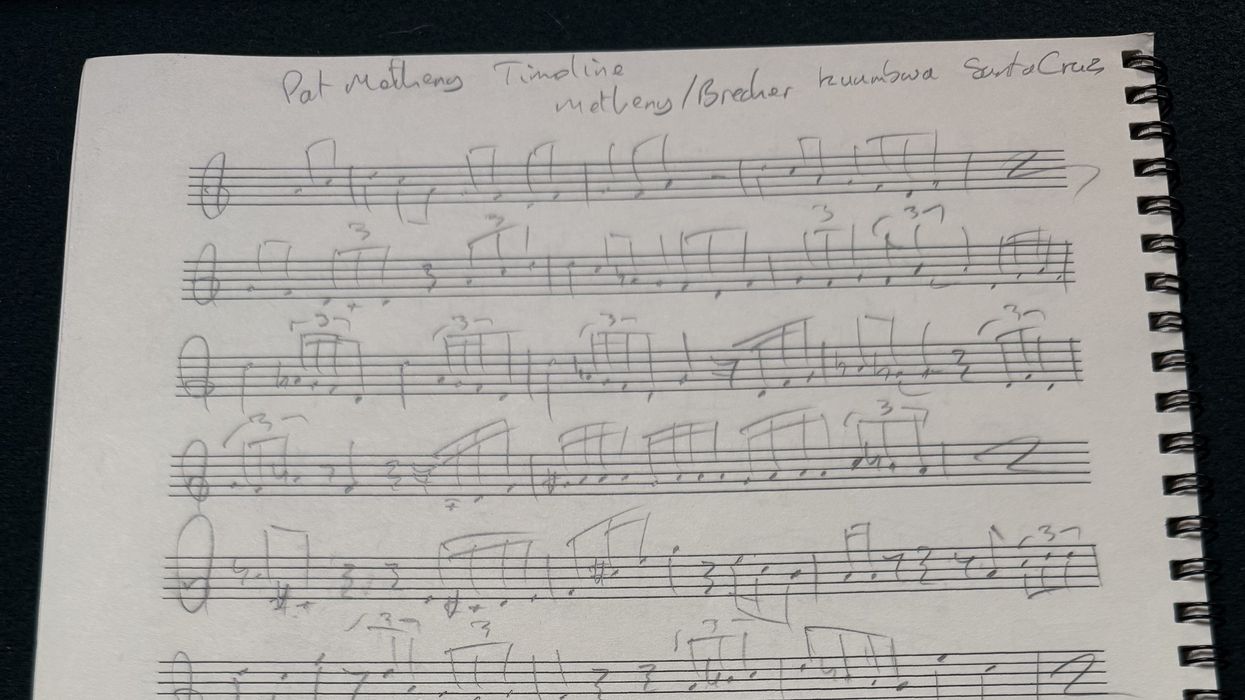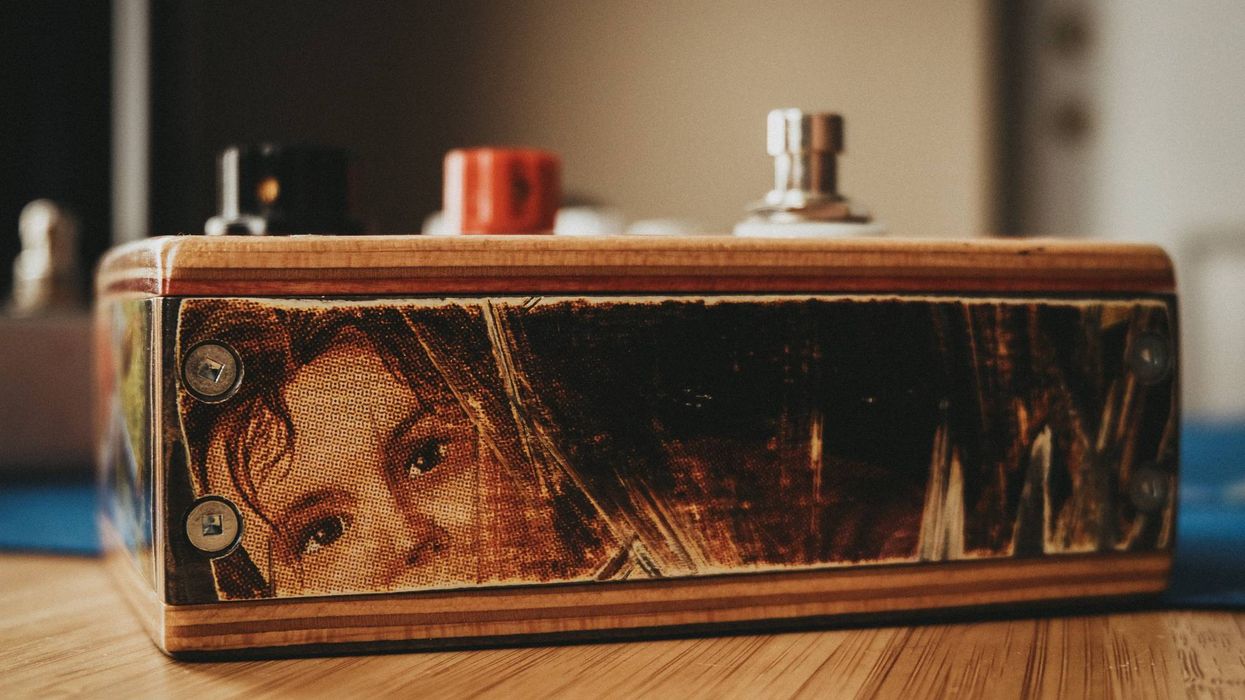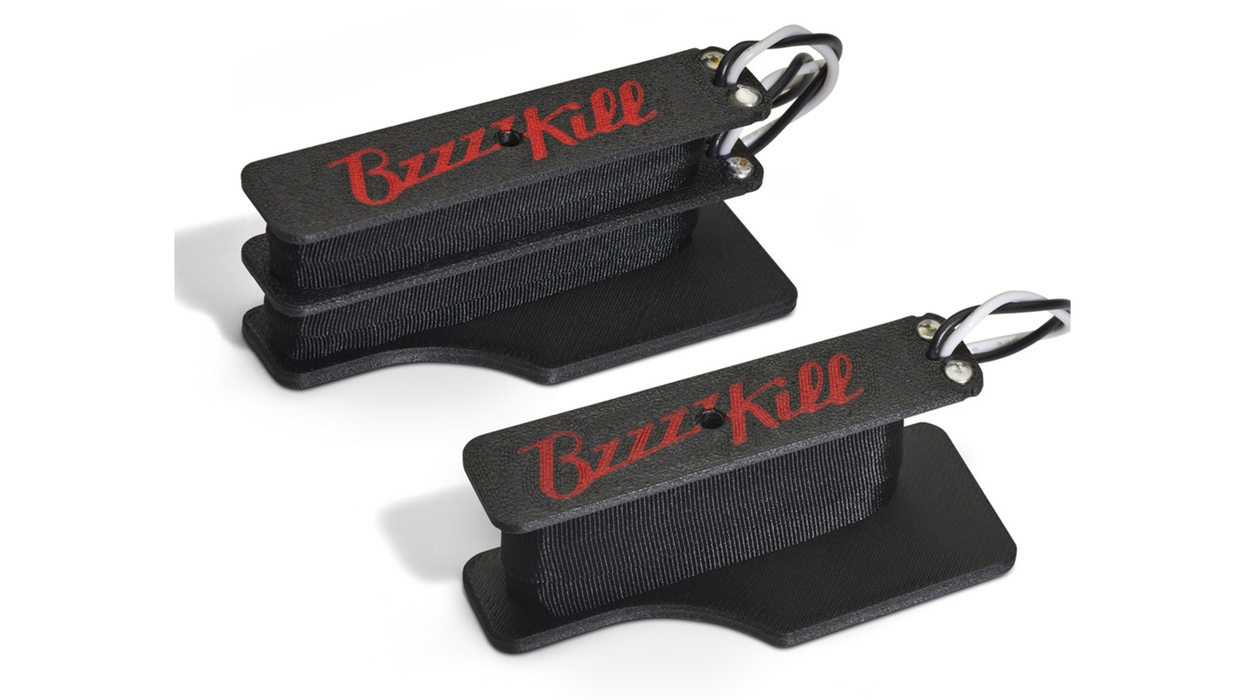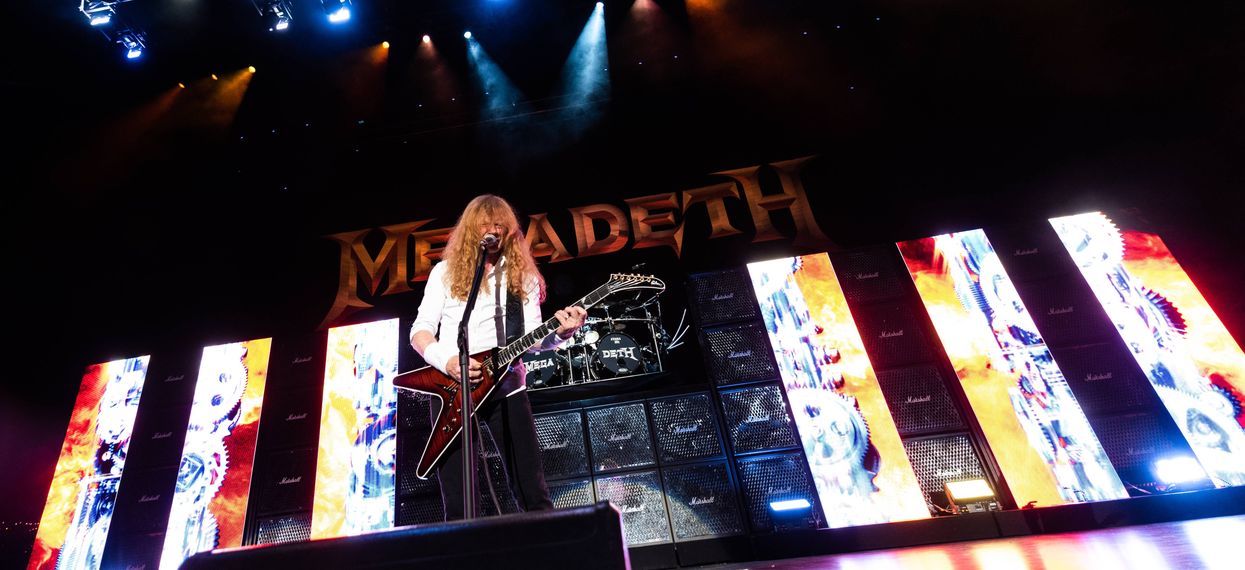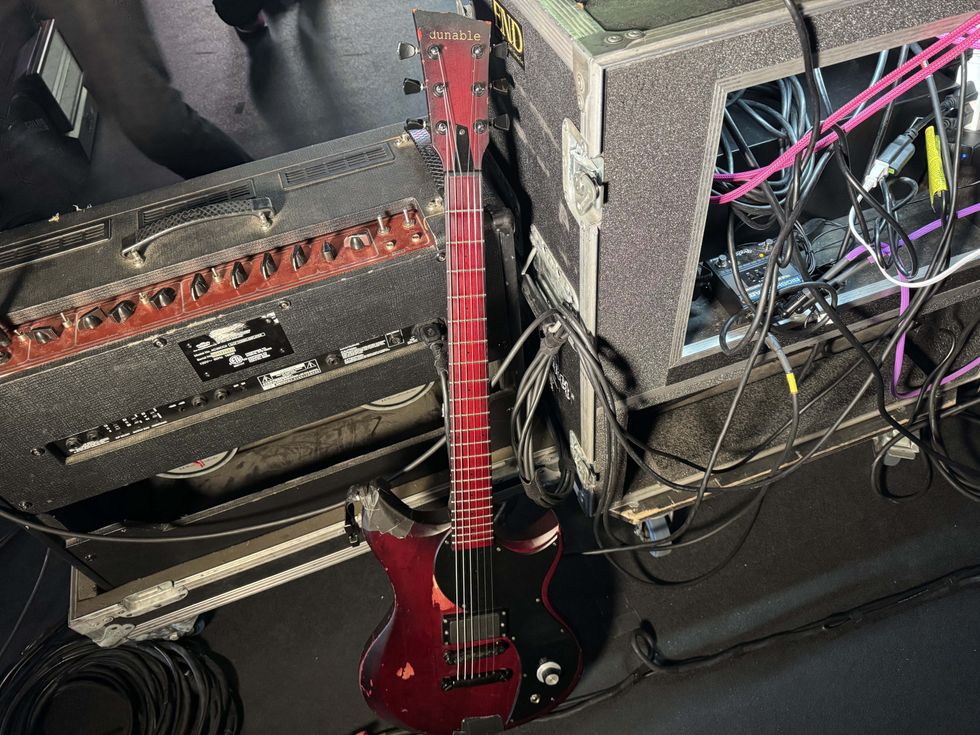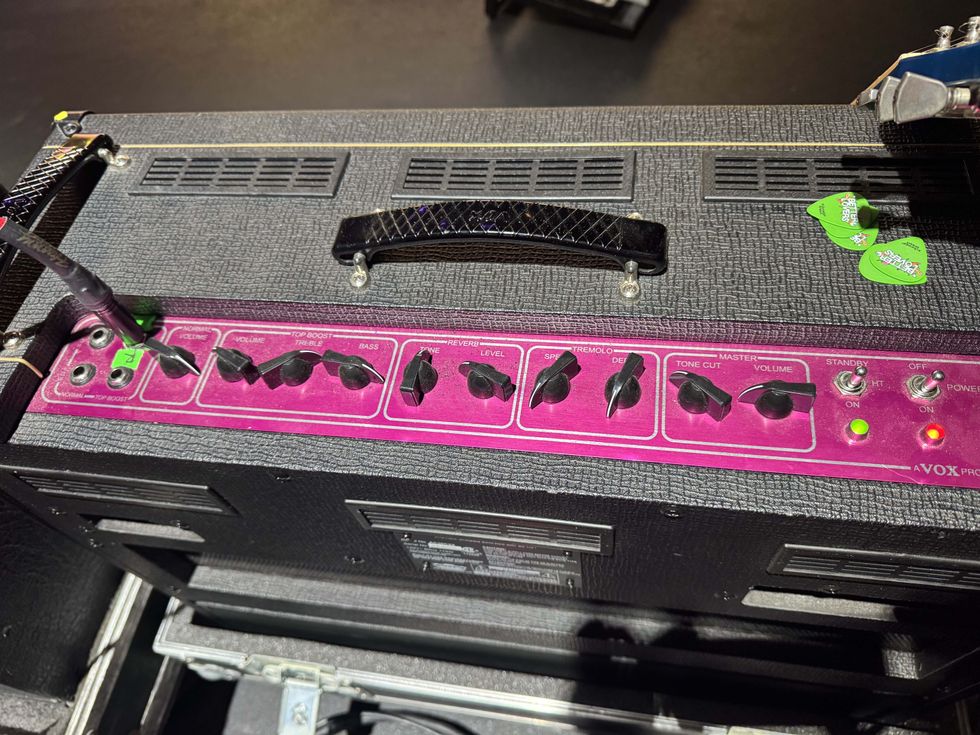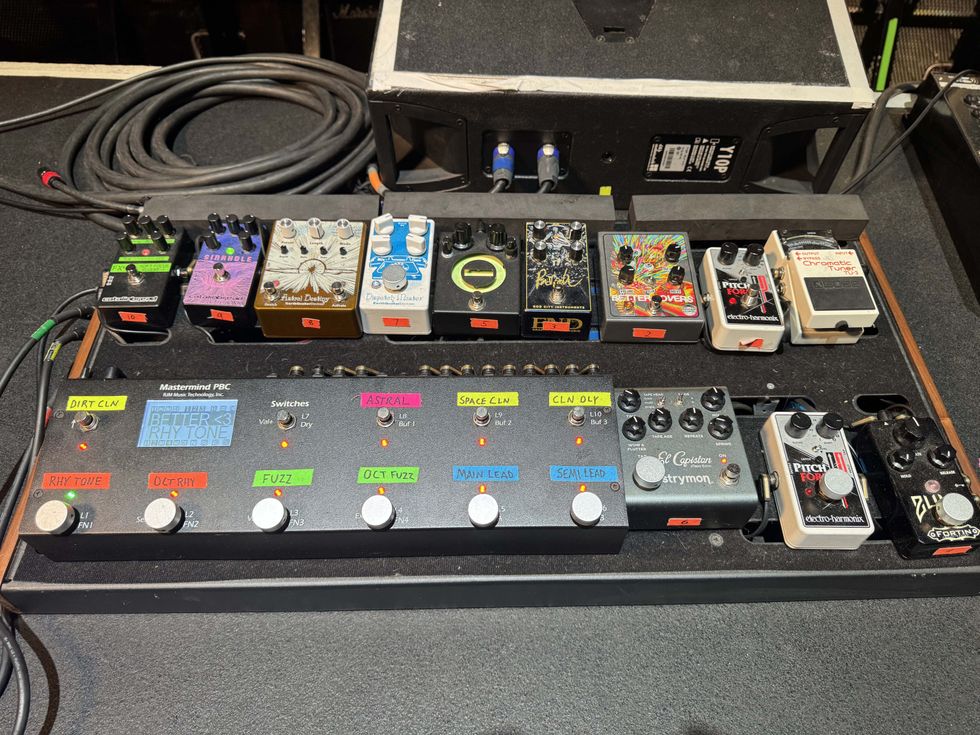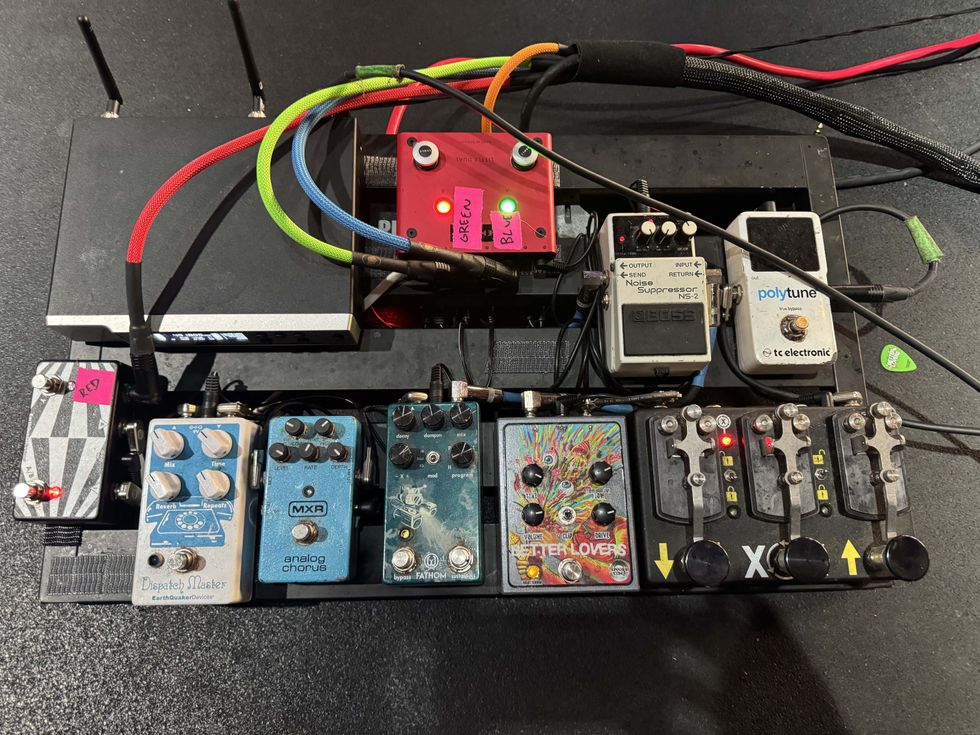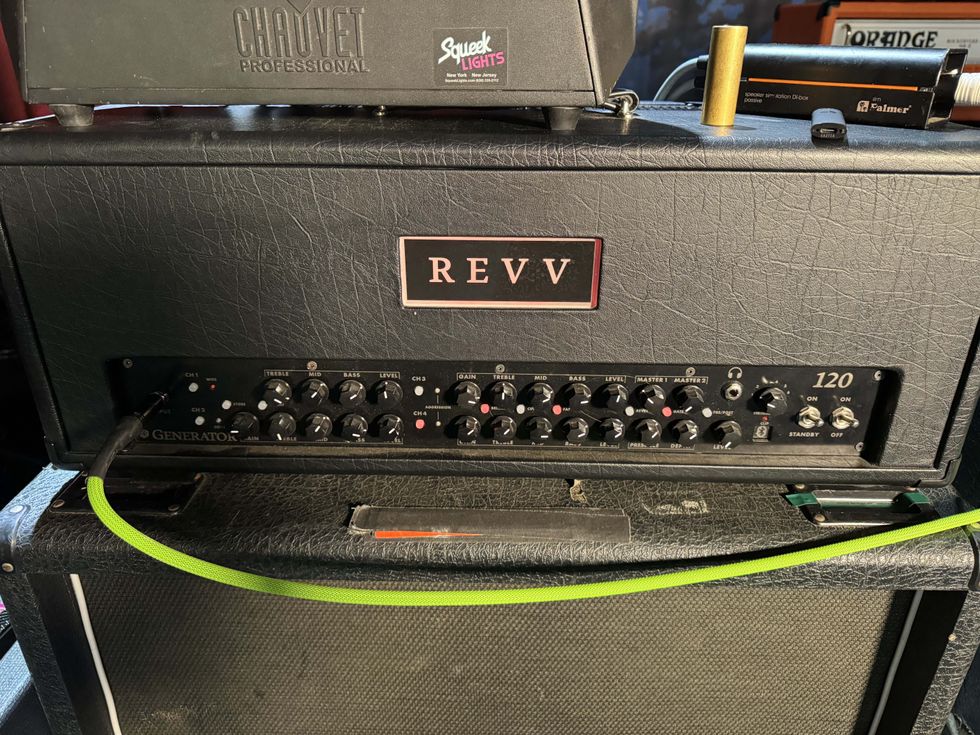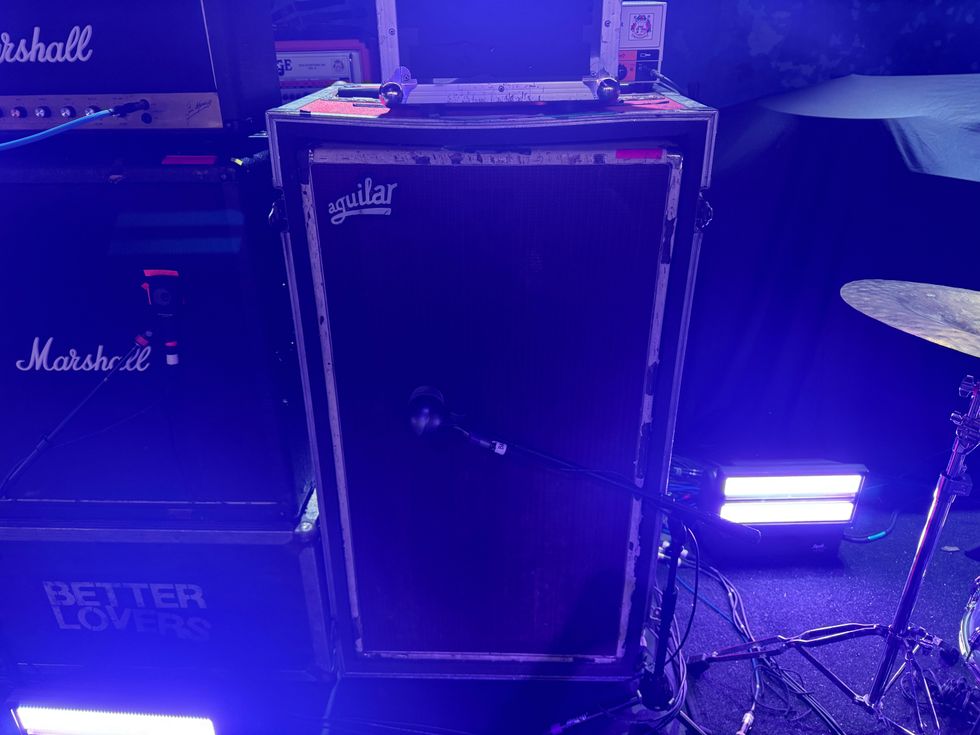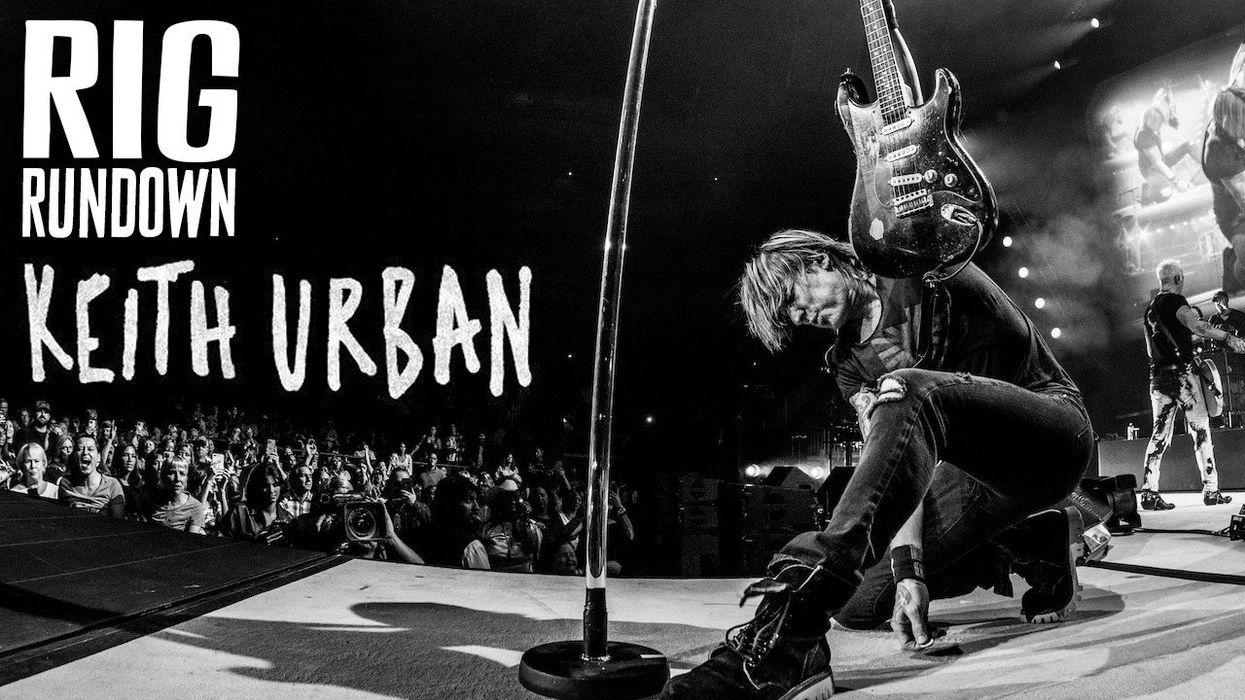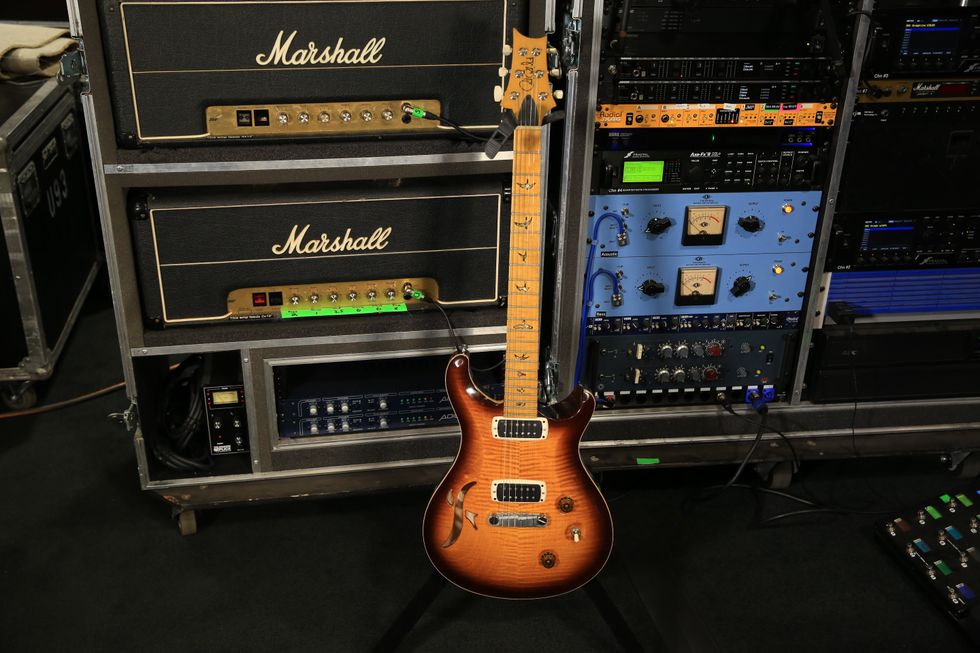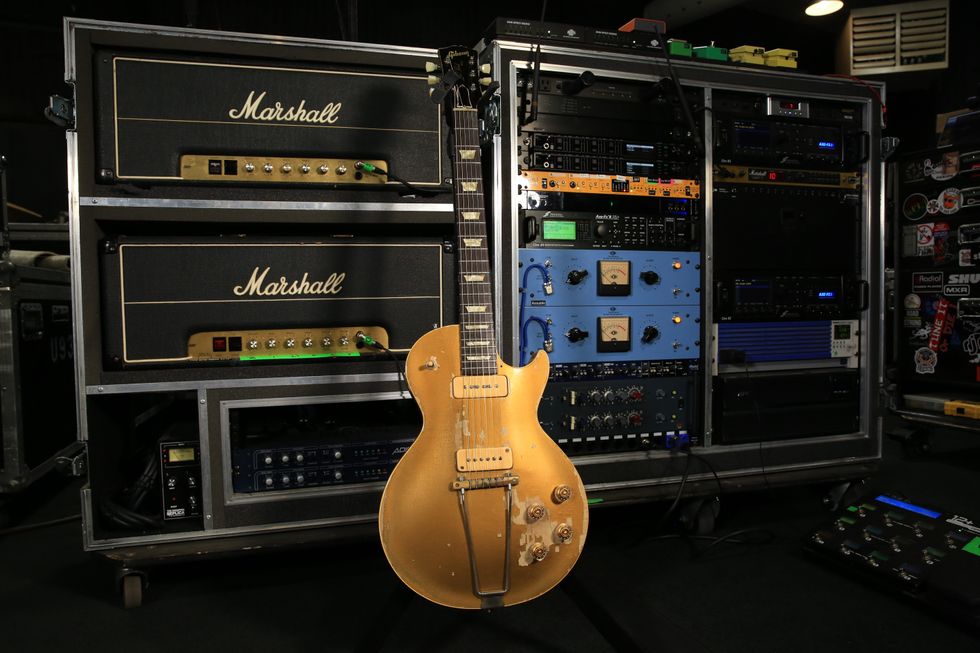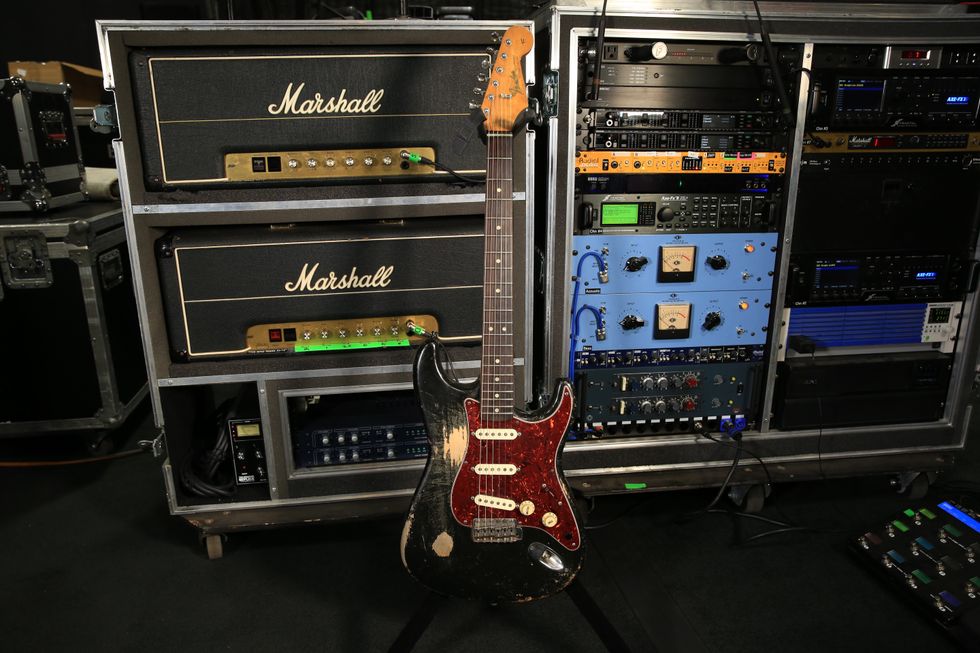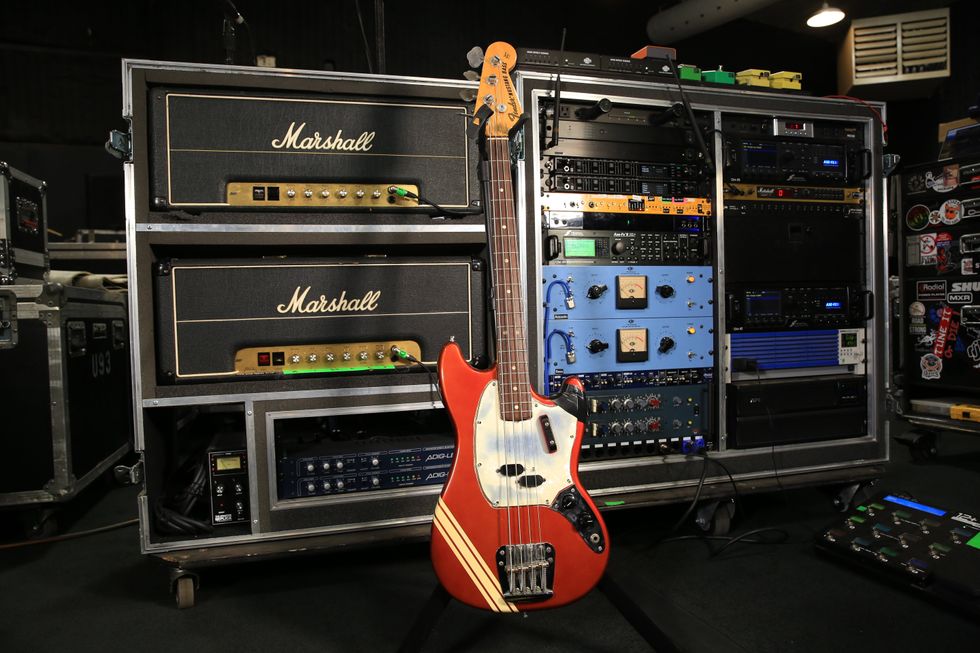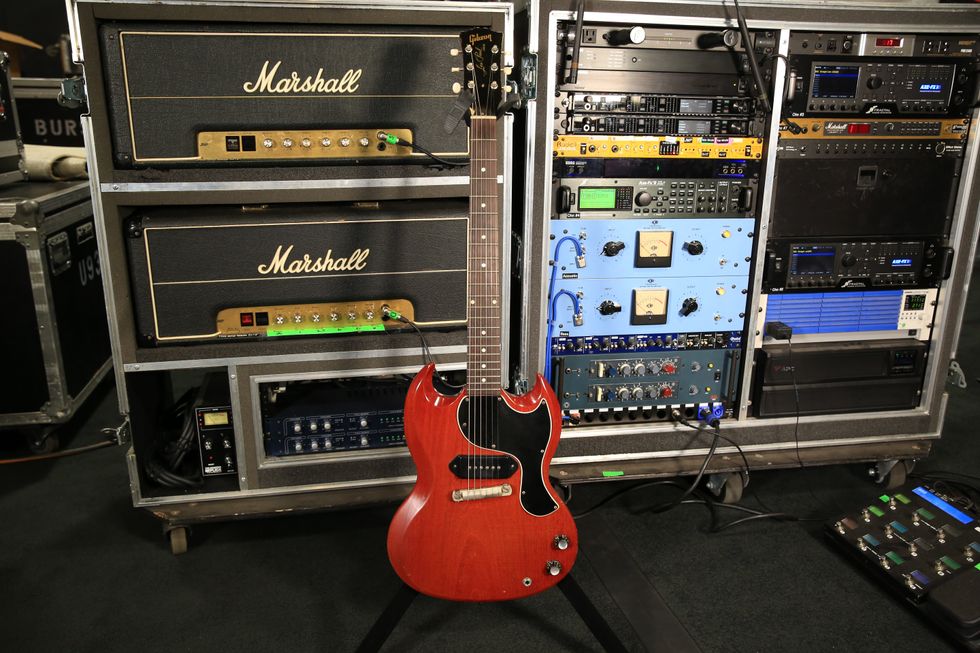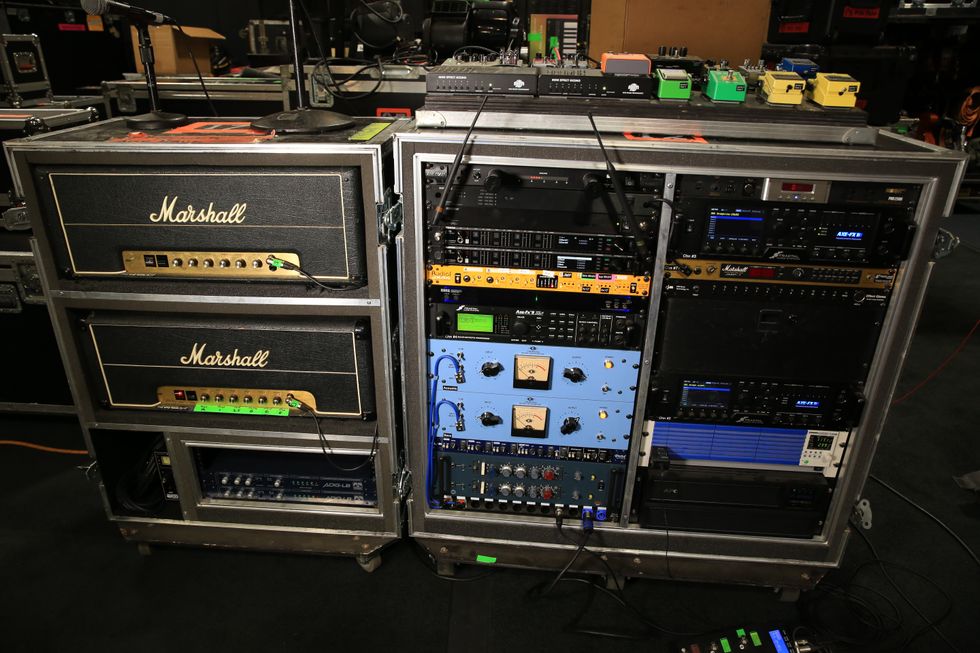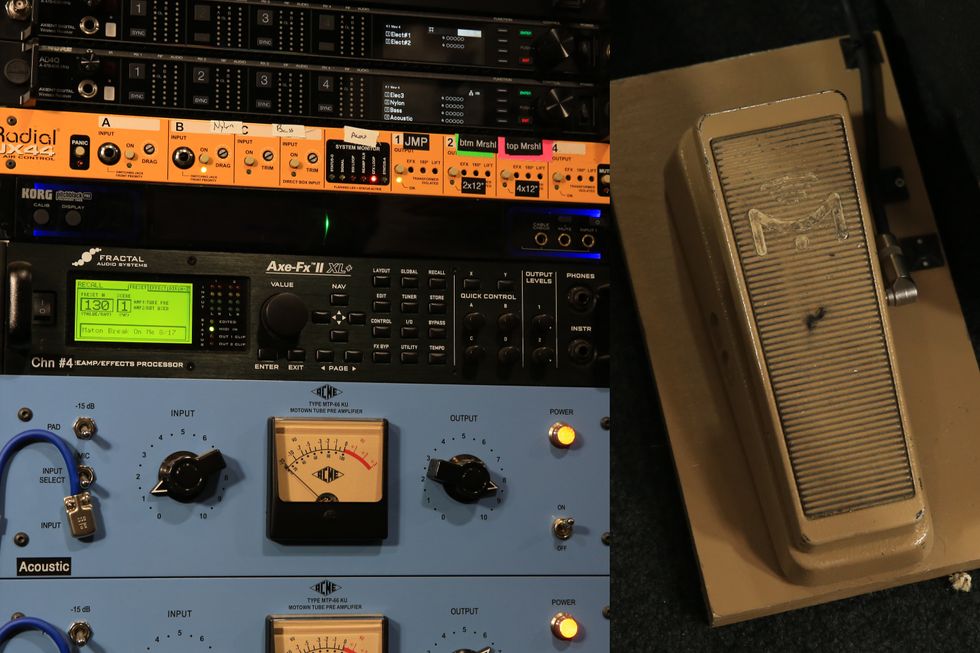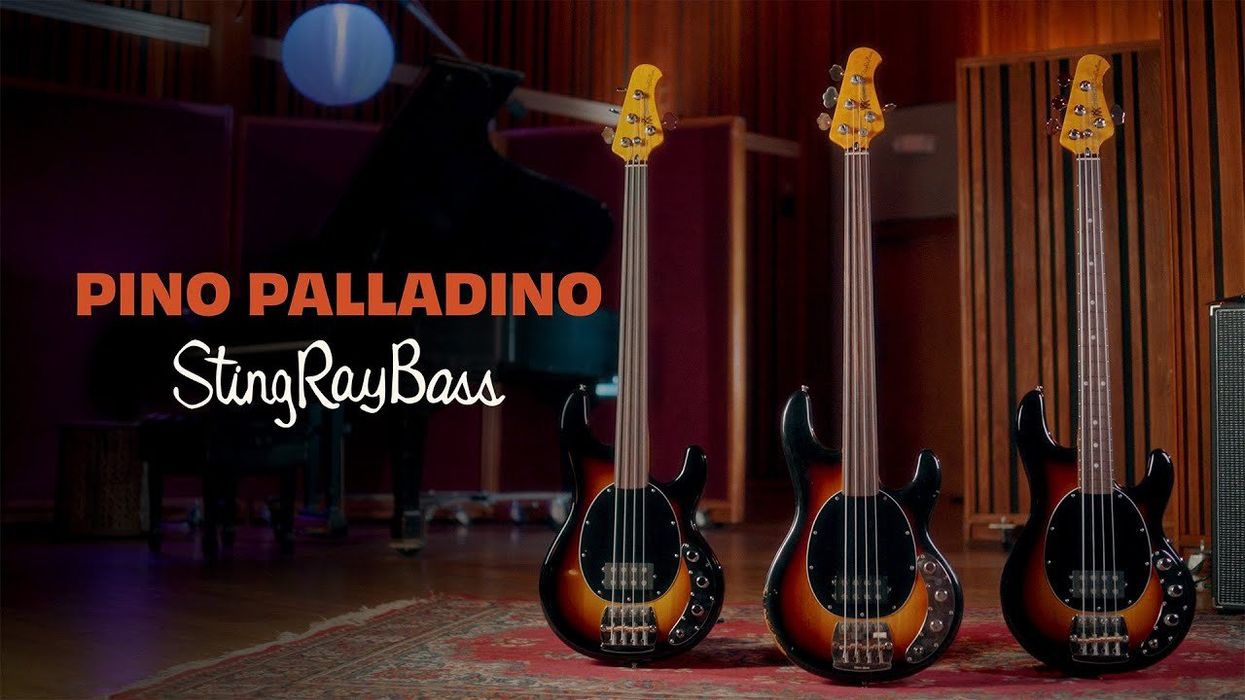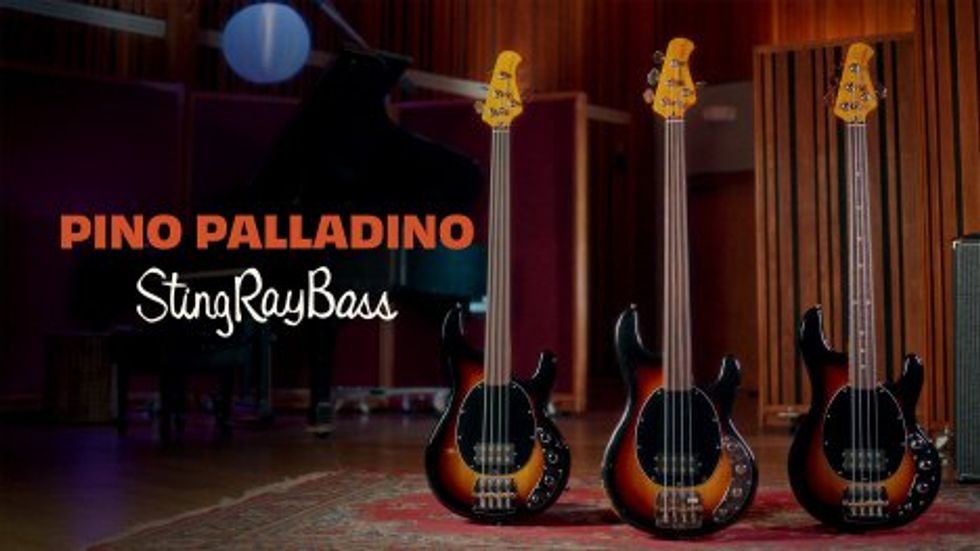Khruangbin’s low-end chill merchant gets a signature instrument that plays like a Jazz Bass best-of.
Laura Lee Ochoa (you may know her by her alter ego, Leezy) is a founding member of the Grammy-nominated band Khruangbin, which is Thai for “airplane.” Khruangbin’s music is fresh and inspired, blurring genres including American soul, Iranian pop, surf, psychedelic, and dub, and creating infectious tunes within that stylistic range. The bass is a prominent part of the trio’s sound and groove. Laura Lee’s go-to 4-string for a number of years was an inexpensive SX-branded Jazz Bass copy. She admitted to playing the bass out of financial necessity. But like their namesake, Khruangbin and Laura Lee have been soaring in recent years. The same could be said of her new Fender signature Jazz Bass.
Prepare for Takeoff
When I laid eyes on the Laura Lee Jazz Bass, I was a bit wonderstruck. What’s special about it? At first glance, oh, just … everything. There is vintage drip, it feels comfortably familiar, and the instrument ticks a lot of boxes that many players would put on a perfect-Jazz Bass wish list. There’s a few surprises, too. If the bass had a “like” button, I would still be pressing it repeatedly.
Much like Laura Lee’s band, exploration within a framework sums up the Limited Edition Laura Lee Jazz bass beautifully. The recipe is so simple, really: start with a legendary, proven design and sweeten with a few unique-yet-familiar components. There is nothing on this bass you would label as new or revolutionary. Instead, it works like a time portal to different, probably more chill, and definitely hipper eras with modern refinements to smooth the ride—a little like a vintage sports car with a newer engine.
YouTube
Vintage Vibes If You P(Leezy)
The Laura Lee Jazz Bass’ offset body is alder and finished in gloss polyester vintage white that looks like olympic white yellowed to a buttery aged hue. The neck is maple (skunk striped, for those scoring at home) with a rosewood fretboard and a synthetic bone nut. The neck’s gloss urethane finish is smooth and silky, and the custom “U” shape feels super comfortable, giving the sense that the bass is holding your hand and guiding you along rather than the other way around. The instrument is well built, and the Ensenada factory did a fantastic job on the rock-solid neck joint. There really isn’t a single flaw.
“The Jazz Bass/flatwound playing experience is like finding an available downtown parking spot for free—leaving me asking, “Why can’t every day be like this?”
Let’s talk about ashtrays for a moment. The chrome pickup covers got their nickname for their resemblance to cigarette-butt snuffers. Some players absolutely hate them, citing limitations to playing style and hand position. Aesthetically, I love them. Few features bring the vintage vibe like ashtrays. Laura Lee, however, enjoys a symbiotic relationship with the ashtrays, which shapes her tone significantly. Instead of looking at ashtrays as restricting, Leezy says the limited hand positions are inspiring, forcing her to think less about her picking hand and more on the melodic potential of her fretting hand. Playing between the covers delivers many cool tone variations, from pointed and percussive aft of the middle cover to Leezy’s signature “peanut butter” tone when you pick on the neck side of the cover.
The Laura Lee Jazz Bass comes with flatwound strings, and all I can say about that is “damn right.” Why should the Precision Basses and hollowbodies have all the fun? Flats on a Jazz bass are nothing new. But for me, the Jazz Bass/flatwound playing experience is like finding an available downtown parking spot for free—leaving me asking, “Why can’t every day be like this?” Flats bring a warm and welcome twist to the Jazz Bass formula.
Amped and Airborne
When I plugged the Laura Lee into an Ampeg Micro stack, the first thing I noticed and appreciated was what I didn’t hear: hum. The quiet performance is thanks to the DiMarzio Ultra Jazz noiseless pickups (and, by the way, if you really want to take off those ashtrays, the pickups feature cool aged-white covers to match the finish). The concentric stacked volume/tone knobs are an added bonus.
It takes minimal effort to get great sounds from the Laura Lee Jazz Bass. With both pickups on full volume and the tone set to 50 percent on the neck and 100 percent on the bridge, I found my sweet spot. This sound was thick-yet-defined and pulsing with vibe. With the ashtrays dictating my hand position, that tone setup could be smooth and subtle on the neck side and more direct on the bridge side. If you don’t like the constraints of the ashtrays, though, you simply remove two screws to take them off, and playing right over the neck pickup yields lots of rich sounds.
Many of the Laura Lee’s other tone varieties are equally compelling. I really liked the murkiness of the neck pickup solo’d with tone at zero. Bump the tone up to 25 percent and the neck pickup output becomes studio-worthy. Adding the bridge pickup beautifully brightens the picture. I may not be a big fan of the bridge-pickup-only approach on this instrument, but plenty of players will find a place for its punch in their universe.
The Verdict
If you asked me to build a vintage Jazz Bass from scratch before I played the Laura Lee, I might have gone a different route, then played this bass and been mad at my choices. From the oversized ’70s logo to the jumbo frets to the oh-so-comfortable neck, I think this bass is amazing. Yes, it’s a collection of parts from across decades, but they work in harmony. This bass took me to a place I didn’t know I needed. It’s an instrument that instantly inspires, and that is the mark of something special.




